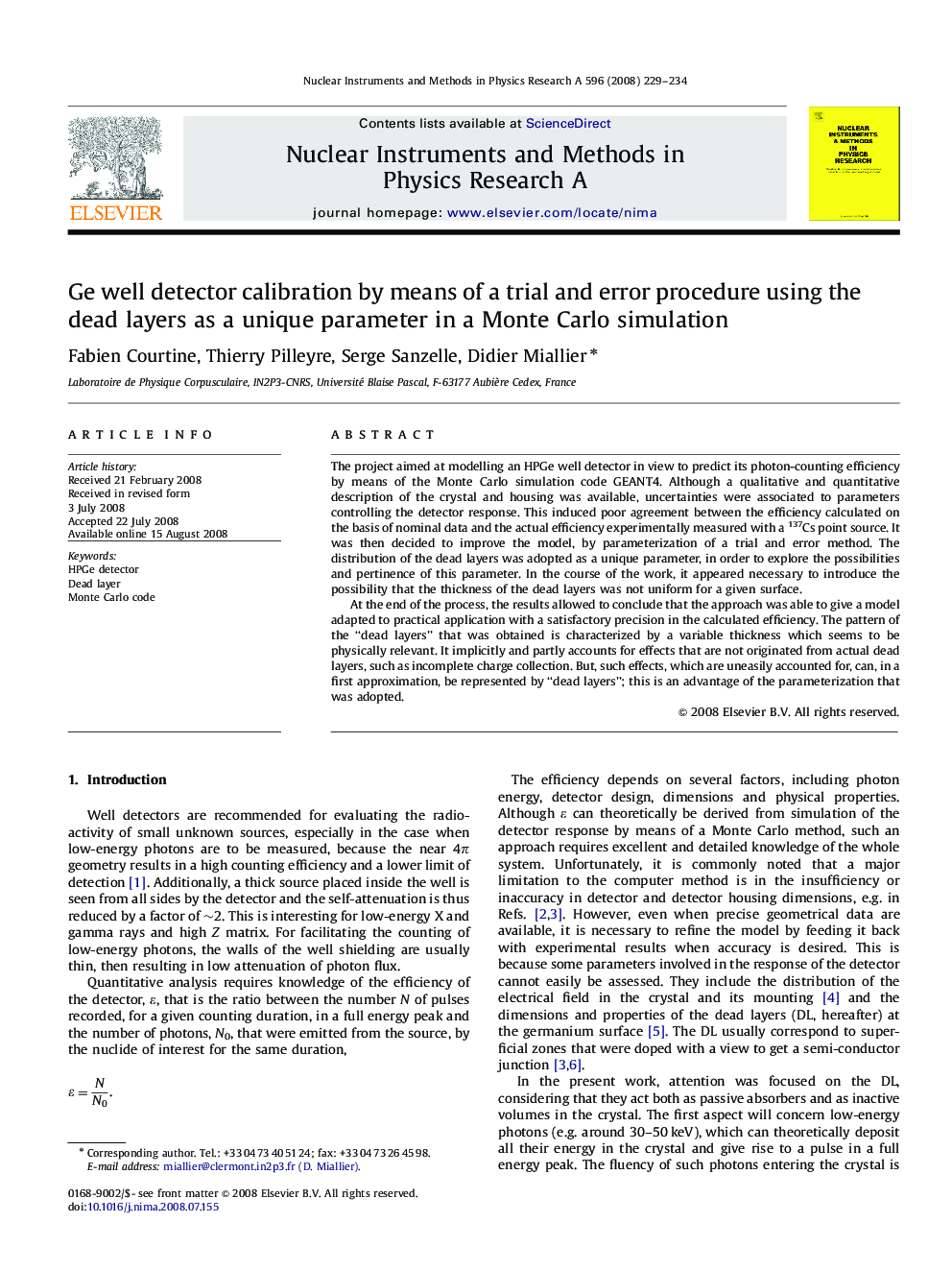| Article ID | Journal | Published Year | Pages | File Type |
|---|---|---|---|---|
| 1830003 | Nuclear Instruments and Methods in Physics Research Section A: Accelerators, Spectrometers, Detectors and Associated Equipment | 2008 | 6 Pages |
The project aimed at modelling an HPGe well detector in view to predict its photon-counting efficiency by means of the Monte Carlo simulation code GEANT4. Although a qualitative and quantitative description of the crystal and housing was available, uncertainties were associated to parameters controlling the detector response. This induced poor agreement between the efficiency calculated on the basis of nominal data and the actual efficiency experimentally measured with a 137Cs point source. It was then decided to improve the model, by parameterization of a trial and error method. The distribution of the dead layers was adopted as a unique parameter, in order to explore the possibilities and pertinence of this parameter. In the course of the work, it appeared necessary to introduce the possibility that the thickness of the dead layers was not uniform for a given surface.At the end of the process, the results allowed to conclude that the approach was able to give a model adapted to practical application with a satisfactory precision in the calculated efficiency. The pattern of the “dead layers” that was obtained is characterized by a variable thickness which seems to be physically relevant. It implicitly and partly accounts for effects that are not originated from actual dead layers, such as incomplete charge collection. But, such effects, which are uneasily accounted for, can, in a first approximation, be represented by “dead layers”; this is an advantage of the parameterization that was adopted.
